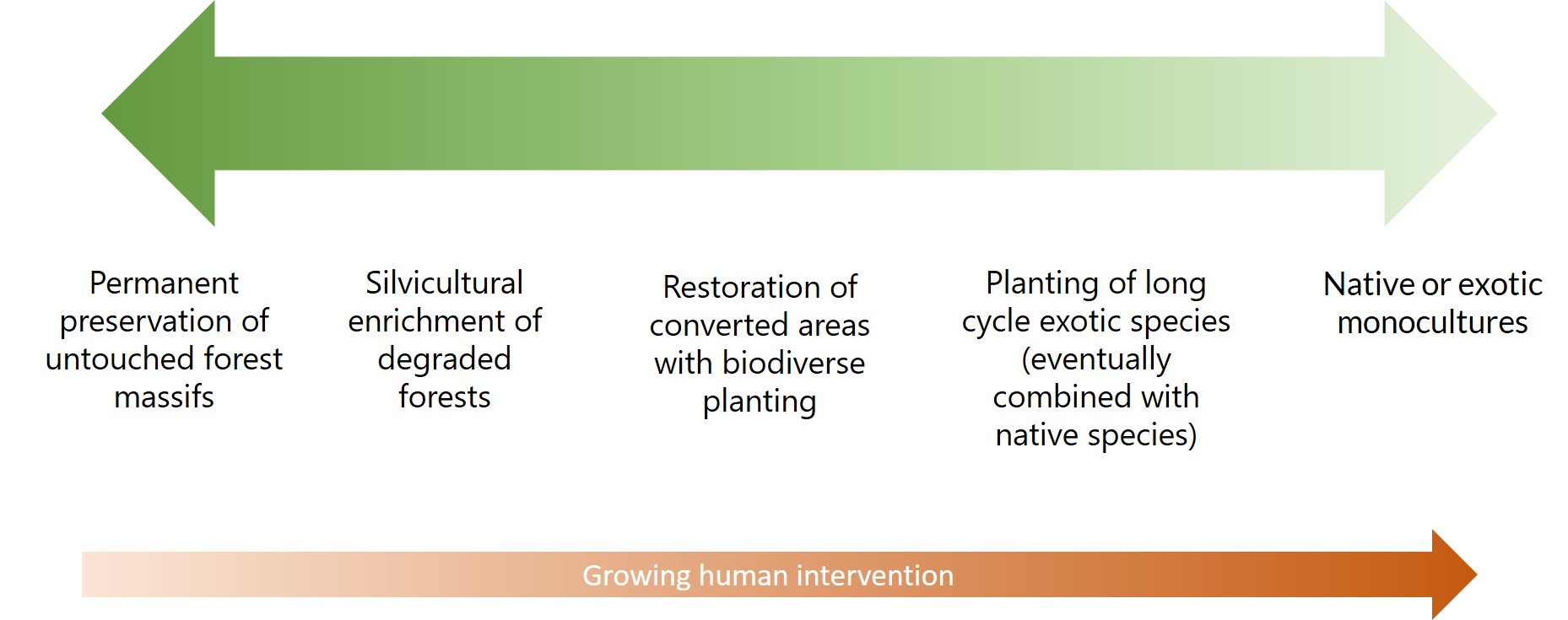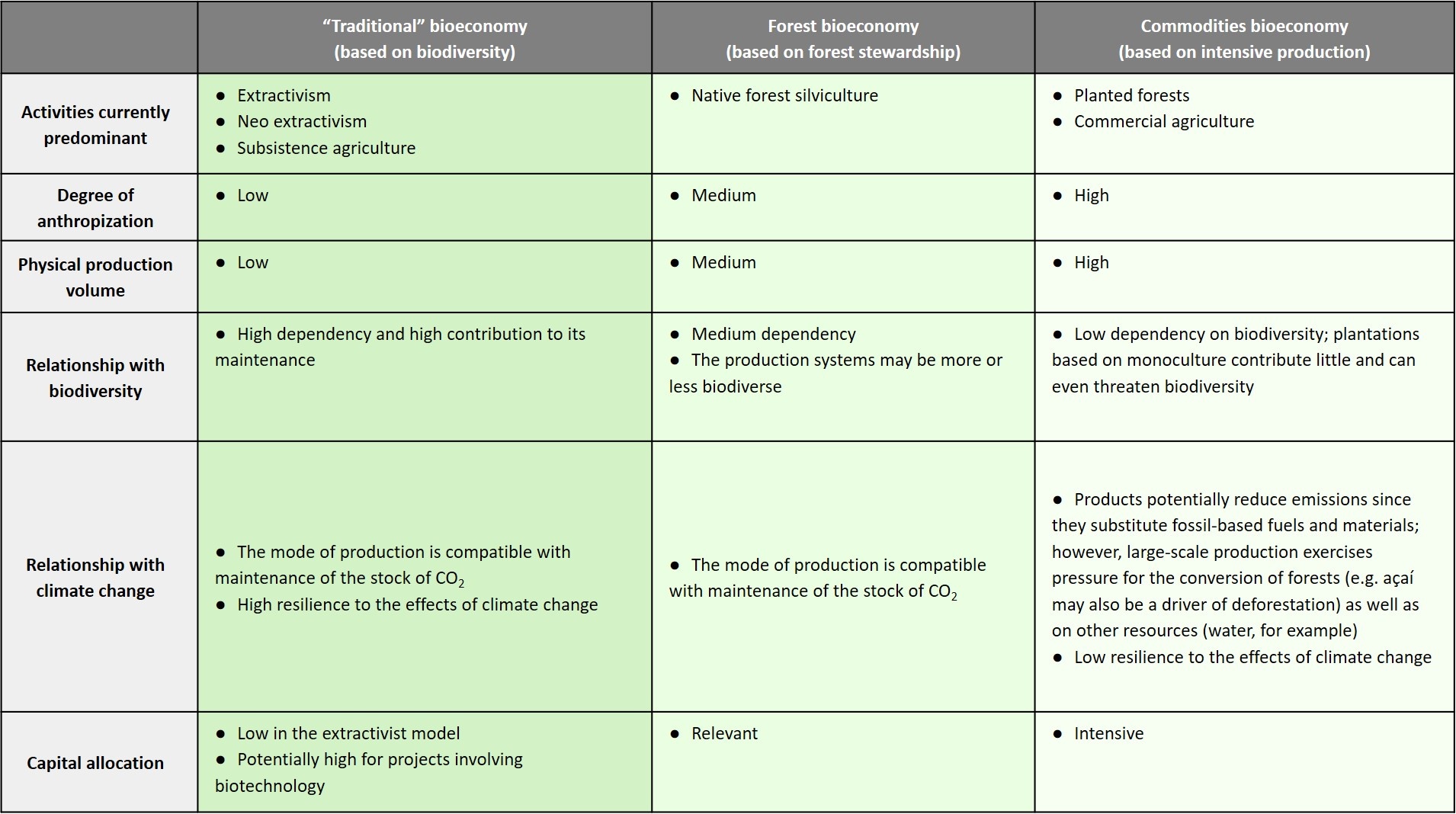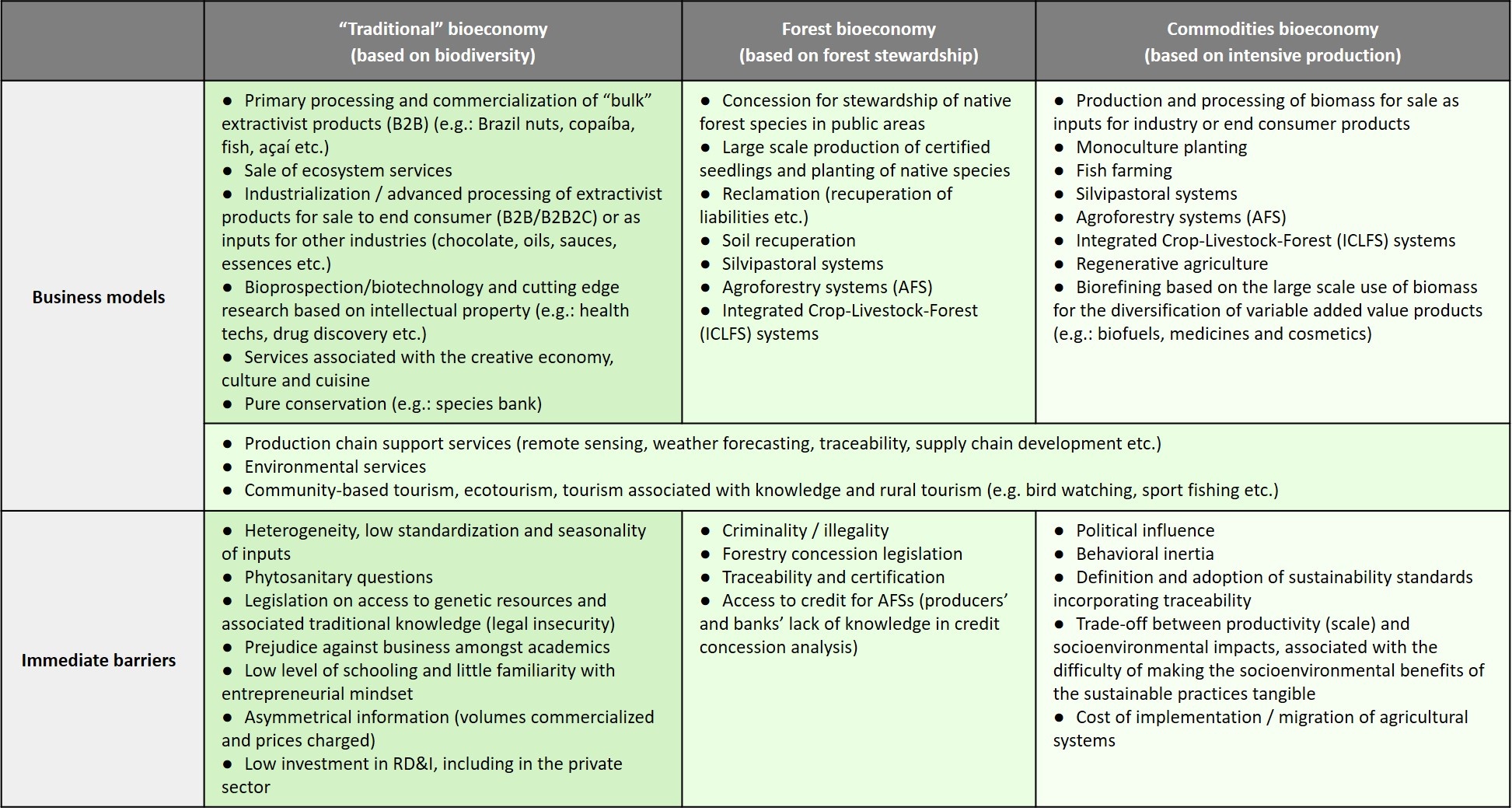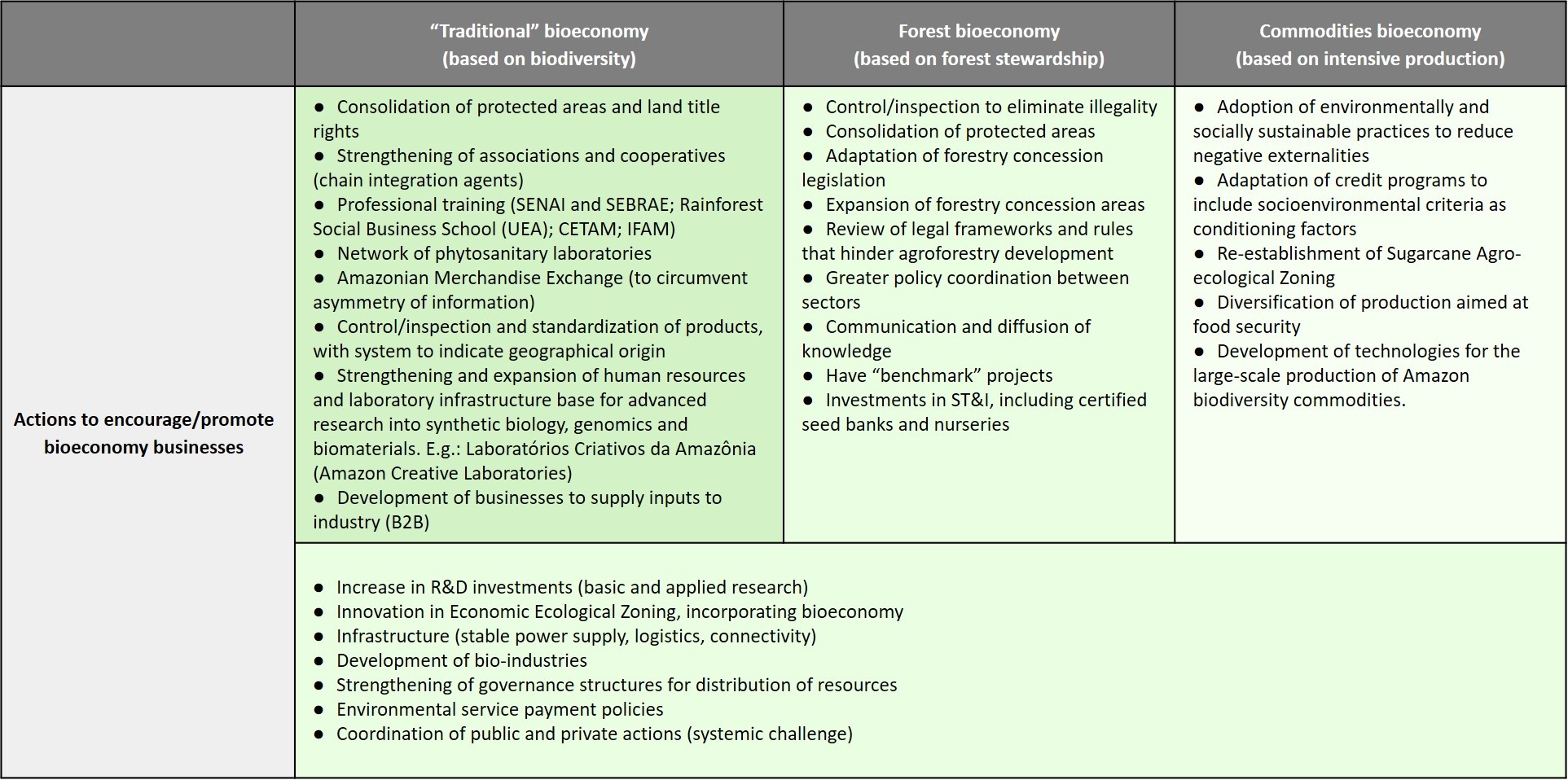Forests, rivers and people: elements from which the Amazon Concertation initiative builds references in bioeconomy for Brazil’s different Amazons
The Amazonian territorial diversity, reflected in its peoples, cultures, soils, flora and fauna – the Amazonian socio-bio-geo-diversity – contains unique elements to provide mankind with better living conditions. This comprehends different sectors: healthcare, food and climate regulation, as well as the distribution of wealth and the promotion of social well-being. From an economic perspective, the Amazon has an important potential to generate wealth and prosperity with quality, based on a number of products and services, adding value and conserving genetic heritage through excellence in research, development and innovation.
The premise that rational, consistent and long-term economic development should be grounded in knowledge of nature and the understanding that Amazonian biodiversity constitutes the ballast for this transformational process, establishes the narrative of the bioeconomy as a matrix for sustainable economic development that prevents the excessive simplification of nature that generally occurs when increased production is the objective.
Undoubtedly much has been constructed, both on the political and the economic level, with respect to the bioeconomy. Many sustainable development proposals for the Amazon revolve around this or at least consider it a potential lever. Some authors even advocate that it is the “salvation” of the Amazon. The concept of bioeconomy has already been defined by diverse organizations, and it has recently been redefined for the Amazonian context, as in the following examples:
- “The bioeconomy encompasses the whole value chain and is oriented by advanced scientific knowledge and the pursuit of technological innovations in the application of renewable biological resources in industrial processes to generate circular economic activity and collective social and environmental benefit” (“Letter entitled “Agenda para o destravamento da bioeconomia” – Agenda to unlock the bioeconomy), addressed to the Vice President of the Republic by the Instituto Escolhas and others, 2020)
- The Amazonian bioeconomy refers “to the economic and commercial activities that involve the sustainable native social biodiversity chains of the Amazon” (Viana et al., 2020)
- The Amazonas bioeconomy refers to “economic activities based on the production, commercialization and distribution of Amazonian social biodiversity environmental active ingredients, oriented to forestry production (timber and non-timber), drugs, fine chemistry, fishing and fruit crops; enabling development throughout the hinterland of the state and driving the empowerment of traditional communities, without leaving anybody behind” (SEDECTI, 2020).
Although some scholars have previously identified different visions or discourses about the bioeconomy, these do not explicitly address the fact that the majority of the academic and political discussions neglect the role of conservation of the tropical forests. The bioeconomy should be driven not only by the conservation of the existing biome, but also by the expansion of the biodiverse areas. As a development matrix, it should employ the logic currently employed in agribusiness, driving the expansion of production areas, understanding the bioeconomy production areas as areas for expanding the diverse biomes, rather than oversimplifying and substituting them.
In the current conjuncture, the discussion of the bioeconomy for the Amazonian context has little in common with the discourse disseminated in industrialized economies, or even in other regions of Brazil, driven mainly by the substitution of materials and fossil fuels and the promotion of the agricultural sector with a view to reducing greenhouse gas emissions. The production of raw materials, even renewable ones, can generate negative effects, particularly regarding the conversion of new areas for agricultural production, which would conflict with the main motivation of those who propose a sustainable bioeconomy for the Amazon.
As such, the diverse definitions demonstrate the need to re-qualify a concept well established both in the academic literature and in the universe of public policy. This need results, among other aspects, from the concern that the normative implications for the bioeconomy agenda in the Amazon further strengthen some drivers of deforestation and the concentration of wealth and income, which would be extremely contradictory. In other words, in the context of the Amazon, the bioeconomy embodies a major ambiguity: it may be seen as a panacea for the problems of the region while also representing a threat to the standing forest.
The discussions promoted within the Amazon Concertation have revealed different interpretations and visions for the bioeconomy and, as a result, the need for a more wide-reaching reference that takes all of them into account.
The first step: recognize the diversity of landscapes and contexts
The Legal Amazon region comprises different biomes and types of vegetation. The region harbors forests on dry lands, flood plains and wetlands, as well as cultivated areas and many other vegetation physiognomies. There are both conserved forests and deforested areas, as well as areas in transition between these two. The region also includes municipalities similar to other urban centers in Brazil. As such, reflection on the paths to the sustainable development of the Amazon requires prior recognition of this heterogeneity. In this regard, the participants of the Concertation have conceived a framework for identifying the elements that distinguish the different Amazons in an effort similar to that made by Danielle Celentano and Adalberto Veríssimo in 2007 when they analyzed the “boom-collapse” pattern in the model of occupation and advance of the Amazonian frontier.
Although any attempt to simplify a complex reality may be subject to criticism, for each region predominant activities were listed and action priorities were established in a targeted manner. By extension, the exercise also permitted the establishment of measures to be included in a cross-cutting working agenda. Policies related to command and control, to combating illegality and to promoting incentives for research and enterprise, as well as land use planning (and tenure), for example, should be elements in an agenda for the territory as a whole. The protection of indigenous peoples and traditional communities should also be a priority in the overall agenda.
Nonetheless, the conserved Amazon requires attention to specific elements, such as the means of financing conservation and a forest economy compatible with this, while in the so-called “arc of deforestation”, a region which is under pressure from land grabbers and the advance of agriculture and livestock breeding, specific conditions are necessary for the development of agroforestry systems, sustainable forest stewardship and the plantation of native species. In the converted Amazon, the agenda should focus on reducing the negative externalities of agriculture, livestock breeding and mining.
For the urban Amazon, analyses could concentrate on discussions about sanitation or questions related to industrial policy. Evidently, Table 1 does not exhaust all the options that should be worked on, but takes into account social and natural diversity and, based on this, offers a reference for the preparation of an initial plan for any intervention that seeks to provoke a wide-ranging, long-lasting impact on the region.
The fact that socio-spatial inequalities cut across all the regions should also be taken into account and should be central to any sustainable economic development proposal aimed at keeping the forest standing.
Table 1. The Four Amazons

The complexity engendered in the diverse subjects listed in Table 1 should not be viewed as an insurmountable obstacle, but rather as an invitation to cooperation, articulation and the coordination of efforts among actors with different capabilities, resources and knowledge. Based on this broad agenda, we undertook an initial in-depth assessment of the opportunities for economic development. Among so many necessary actions, Table 1 highlights some types of bioeconomy in terms of impacts on natural resources and local populations, reflecting what already had been exposed previously. The question is: what should be the role of the bioeconomy for the sustainable development of the Amazon?
The second step: a framework for a bioeconomy in the Amazon
In a similar way to the framework of the Four Amazons, we proposed a typology for a bioeconomy that could support a broader comprehension of the subject as a common denominator for a robust strategy, taking into account the relationships between them, including not only risks and trade-offs, but also synergies and opportunities. Table 2 that follows identifies characteristics that distinguish possible “promotion fronts” for the bioeconomy, in accordance with different approaches and production systems. It is not a question of a conceptual dispute. The purpose of the exercise was not to endorse any particular class of bioeconomy, but rather to recognize the diversity of interpretations.
Neither does the detailing of the three groups translate into a definitive classification. It is merely a stylized representation aimed at illustrating how the economic activities and diverse relevant aspects vary along the spectrum and identifying and proposing more targeted actions. In this respect, it should be noted that the concept of (agro)forestry continuum, illustrated below, is considered in relation to these stylized groups.
Ilustration of the (agro)forestry continuum

Methodologically, the characterization of the currently predominant activities is a starting point for identifying activities that may be promoted, the bottlenecks for the development of the production chains, the actions necessary to overcome these, as well as the business models for each group.
Table 2. Framework for a bioeconomy in the Amazon



What contributions does the framework make?
Table 2 helps to make the trade-offs and risks of the bioeconomy agenda more explicit, such as the possible net increase in emissions or the loss of biodiversity resulting from the substitution of fossil-based raw materials with the unrestricted cultivation of biomass. Such risks should be recognized and make the monitoring of direct and indirect impacts fundamental. In the value chains, concerns such as these make the socioenvironmental safeguards and certification systems even more important.
From the public policy standpoint, an integrated approach should adopt a clear commitment to protecting biodiversity and the climate. Brazil already has policies that support the bioeconomy from different perspectives (science and technology, family agriculture, regional development, energy, among others). However, they lack a broader overall coordination. In this respect, climate governance in the country could be a means of integrating them in order to ensure that determined frontiers are not overstepped.
Regarding the consequences for businesses, it may be noted that in each domain there are implications for the scale of production and needs and forms of financing. The projects that involve the use of biodiversity present different risk/return ratios for investors. Consequently, there is a specific set of policies to be adopted to provide incentives for businesses in each context.
Reflection upon business models that add value to the standing forest involves a broader understanding of the bioeconomy that comprehends not only products, but also services, one of which is the contribution to mitigating greenhouse gas emissions. It is necessary that both negative and positive externalities be explicitly recognized to enable the economic feasibility of bioeconomy businesses that are compatible with the objectives of conservation and climate protection.
This reflection involves exploring not only the valuable genetic resources of the tropical forest or the forestry products themselves, but also the waste generated by the extractivist or urban chains. Even though there are good examples of how to promote a circular bioeconomy in the actual region itself, this would be an opportunity to take greater advantage of contributions from international experience, particularly because the greatest part of the population of the Brazilian Amazon lives in urban areas.
The bioeconomy framework could also help in the identification of synergies related to an R&D agenda. Biodiversity is said to be a sophisticated factory of molecules. Molecule prospection research in the forest can benefit innovation in production processes oriented to new materials based on the intensive production of biomass, since innovations may occur in the type of raw material, in the conversion processes or in the final products.
Lastly, the bioeconomy framework may help local governments to formulate more suitable public policies for valuing social biodiversity by means of knowledge and the businesses and develop Brazilian and international partnerships to drive an economic matrix based on the premises of a standing forest and reduction of socio-territorial inequalities.
Certainly other conclusions may be derived from the framework. The next steps include the organization, by those mentioned below, of the Fórum Estadual de Bioeconomia do Amazonas (Amazonas State Bioeconomy Forum). Amazonas has already used the framework to facilitate conversations aimed at formulating more suitable public policies for the region. Furthermore, based on this initial exercise, the exploration of business models for each of the bioeconomies that may enable development projects for the Amazon region is being pursued.
*Bioeconomy Group of the Amazon Concertation
Roberto Waack, Renata Piazzon and Inaiê Santos, Instituto Arapyaú
Cláudio Pádua, Instituto Bionegócios
Marcello Brito, Associação Brasileira do Agronegócio (Abag – Brazilian Agribusiness Association)
Tatiana Schor, Secretaria de Estado de Desenvolvimento Econômico, Ciência, Tecnologia e Inovação do Amazonas (SEDECTI-AM – Amazonas State Department for Economic Development, Science, Technology and Innovation)
Mariano Cenamo, Instituto de Conservação e Desenvolvimento Sustentável da Amazônia (Idesam – Institute for the Conservation and Sustainable Development of the Amazon)

